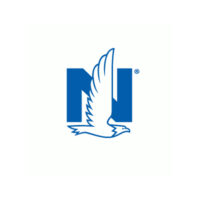Survey results examine Middle Market challenges for 2023
When running a successful business, there’s a lot to manage. Not only do business owners have to dedicate considerable time and effort to ensure operations run as smoothly as possible, but numerous outside trends can significantly impact an organization’s bottom line and longevity.
To navigate these trends effectively, business owners rely on their trusted insurance partners to educate them and provide actionable steps to mitigate potential exposures. For 2023, there are several sweeping market developments to consider, and it’s more important than ever that organizations stay on top of new and emerging threats to their business.
Inflation
By all accounts, 2022 was a particularly troubling year for inflation. According to data from the U.S. Bureau of Labor Statistics (BLS), the consumer price index (CPI) for all urban consumers increased by 9.1% year over year in June 2022, reaching a 40-year high.1 Further, according to a recent Nationwide Agency Forward survey, many small- and mid-market businesses reported struggling with the impact of inflation and don’t expect relief any time soon.
More than half of small and mid-market businesses (58% and 54%, respectively) said they struggle with managing the impacts of inflation on their business. And roughly two in three small (68%) and mid-market (63%) business owners believe that inflation will have an even greater impact on their business in 2023 than it does today.2
Moreover, periods of high inflation can affect lines of insurance differently. The following are some considerations of note:
- Property—Due to rising labor and material expenses, the cost to repair or rebuild structures and their contents after losses has increased significantly in the property insurance space. According to BLS data, the CPI for several property-related items, including floor coverings, window coverings, and furniture and bedding, saw a notable year-over-year increase in October 2022. For example, the CPI for floor coverings, window coverings, furniture and bedding increased by 12.8%, 3.7% and 8.3% respectively.3
- Auto—In the auto insurance market, vehicle repair expenses and subsequent accident costs have surged, brought on by supply chain disruptions for several critical vehicle parts. These concerns were reflected in an increased year-over-year CPI in October 2022 for new vehicles (8.4%), used cars and trucks (2%) and motor vehicle maintenance (10.3%), according to BLS data.4
- Workers’ compensation and liability—Apart from rising CPI, the workers’ compensation and liability insurance segments are affected by other forms of inflation, specifically medical and wage inflation:
- Medical inflation refers to the increasing prices of health care necessities, which are usually determined a year in advance based on projections by Medicare and private insurance contracts. Since these projections were made before the CPI increased significantly, medical inflation has remained relatively low compared to overall inflation trends. However, elevated liability claims and coverage costs stemming from medical inflation are expected to arise in the coming year. Further, hospitals and other healthcare providers will need to find ways to operate with less staff or cut other expenses, particularly as wage increases for health workers will put increased pressure on medical prices.5
- Wage inflation refers to the increasing salaries of workers. In response to ongoing labor challenges, many businesses have raised their workers’ pay, contributing to wage inflation. Since payroll is used as the exposure base to calculate workers’ compensation premiums, wage inflation could lead to increased rates. Additionally, such inflation may increase the risk of payroll miscalculations and create short-term disconnects between wages, benefits and workers’ compensation premiums. Most states have an index for wage inflation to ensure that premiums and benefits keep up with each other, but it is still possible for errors to occur.6
To help curb overall inflation concerns, the Federal Reserve (Fed) has steadily hiked up interest rates in recent months.7 In 2023, economic analysts expect the Fed’s efforts to control inflation to eventually succeed, with inflation rates slowly declining throughout the year. According to Goldman Sachs, the core price consumption expenditures index (CPE), which is used by the Fed to measure inflation and excludes food and energy prices, is currently at 5.1% but is expected to drop to 2.9% by the end of 2023 (the Fed typically aims for a CPE of 2% in a healthy economy).8
Recession risks
According to some economic experts, rising interest rates and ongoing labor market challenges could lead to a recession in the United States in the next 6 to 9 months. A recession is a prolonged and widespread reduction in economic activity, and a 2023 recession is likely if the Fed keeps raising its terminal policy rate (the level at which it will no longer increase interest rates) higher than initial estimates (5-5.5%) to control inflation effectively.9
It is crucial for organizations to be prepared for the potential onset of a recession, as the economic impacts of such an event can create a range of risks for businesses. Specifically, during a recession, businesses of all sizes and industries typically see a decrease in sales and profits due to changing consumer behaviors. A recession may also limit an organization’s access to credit and reduce their overall cash flow if and when customers take longer to pay for goods and services. As a result, businesses without significant revenues, excess reserves and the extra capital needed to weather extended periods of loss may have to make tough financial decisions to avoid insolvency or bankruptcy. To remain financially viable, these businesses may need to reduce operating costs and consider layoffs.10
It’s worth noting that the U.S. Census Bureau reported that nearly 1.8 million businesses closed their doors amid the Great Recession—the last major U.S. economic downturn.11 To avoid having to shut down and to lessen the impact of a recession, companies may have to reprioritize organizational expenses. As businesses consider their expenses, it can be crucial to have conversations about the importance of business insurance and possible consequences of reducing coverage, such as large out of pocket costs if a loss occurs.
Labor shortages
Over the past few years, many businesses have been struggling with labor shortages. According to the most recent data from the U.S. Chamber of Commerce, there are 10 million job openings in the United States but only around 6 million unemployed workers.12 Additionally, per Provident Bank, 75% of businesses have been affected by these shortages, with the hardest hit industries being transportation, health care, leisure and hospitality.13
The ongoing effects of the COVID-19 pandemic have caused many workers to re-evaluate their employment priorities, leading to a growing demand for flexible work arrangements and better work-life balance. This has resulted in various workforce movements, such as the “Great Resignation” and the “Great Reshuffle,” in which workers left their jobs to retire early, start new businesses, or find more fulfilling roles with better compensation and benefits.14
Economists predict that these labor shortages will continue in the coming years, potentially leading to overworked employees, reduced productivity and project delays, skills gaps and increased workplace accidents. In response, many businesses have adjusted their hiring and retention tactics by offering better perks and benefits, implementing work-from-home or hybrid arrangements to meet their employees’ changing expectations and attract new talent.
Analyzing the results of Nationwide’s Agency Forward Survey, an increased focus on employee retention is especially important given the state of the labor market. As a result of the labor shortages, some of the top workforce obstacles of focus going into 2023 will include retaining current workers (42%), preventing worker burnout/managing workers’ mental health needs (41%), and keeping workers engaged and productive (37%).15
Per the survey, 58% of middle-market business owners reported they were facing a worker shortage. Further, 60% of respondents indicated they were concerned about “quiet quitting”—an emerging trend where workers only do what their job description entails without going above and beyond.16 Quiet quitting is often the result of high levels of burnout or decreased motivation. This is concerning, as disengaged employees are generally more likely to leave their roles altogether, putting more pressure on businesses in an already tight labor market.
Supply chain issues
The COVID-19 pandemic has caused various supply chain disruptions due to increased demand and reduced production during lockdown measures. However, even as businesses have resumed operations and increased production, consumer demand for certain items has continued to outpace inventory. This, along with international disruptions, rising fuel and energy costs, extreme weather events, and a shortage of warehouse workers and truck drivers, has slowed shipment and delivery times for high-demand goods.
These supply chain disruptions have impacted multiple industries, including manufacturing, construction and retail. A recent survey conducted by international software company SAP found that at least half of business leaders have experienced financial impacts stemming from supply chain bottlenecks since the start of the pandemic—including decreased revenue (58%), a greater need to leverage business loans (54%) and an inability to pay employees (50%). In response to these financial struggles, 61% of business leaders have had to implement wage or recruitment freezes, 50% have made staff reductions and 41% have increased the prices of their products or services.17 In response, many business leaders have implemented wage or recruitment freezes, made staff reductions or raised prices. Some experts believe these supply chain issues will continue into 2023, so it is important for businesses to prepare and consider adopting new supply chain technology, updating contingency plans, prioritizing domestic supply chain solutions and exploring eco-friendly options.
Key takeaways
- Small and mid-market businesses have felt the impact of rising inflation, with more than half (58% and 54%, respectively) reporting that they are struggling with managing the impact of inflation. Most small and mid-market business owners believe that inflation will have an even more significant impact on their business in 2023.
- Rising interest rates and ongoing labor market challenges could lead to a potential recession in the U.S. in the next 6 to 9 months, according to some economic experts. To lessen the impact of a recession, businesses may have to reprioritize their expenses.
- Many businesses are struggling with labor shortages, with 10 million job openings in the U.S. but only 6 million unemployed workers. The COVID-19 pandemic has caused many workers to reevaluate their employment priorities, leading to a greater demand for flexible work arrangements and better work-life balance. As a result, businesses have had to adjust their hiring and retention tactics to better attract and retain workers.
- The global pandemic has caused various supply chain disruptions, including increased consumer demand and reduced production levels. Business leaders have implemented wage or recruitment freezes, made staff reductions, or raised prices in response to these disruptions. Some experts believe that these supply chain issues will continue into 2023, so it is important for businesses to prepare and consider adopting new supply chain technology and contingency plans.

